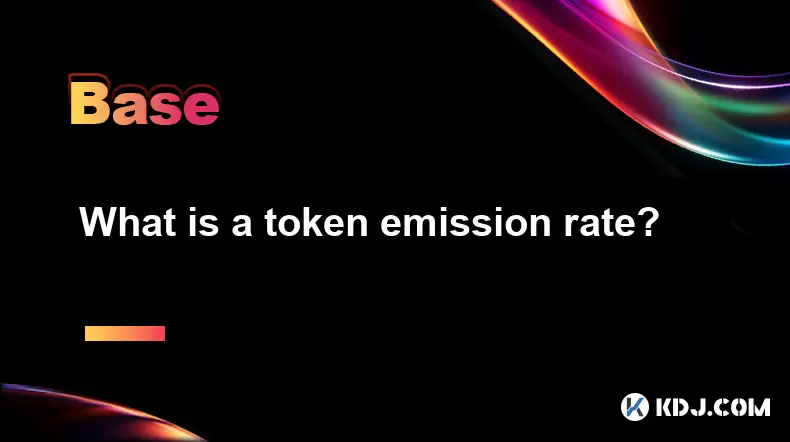-
 Bitcoin
Bitcoin $108,562.4295
0.46% -
 Ethereum
Ethereum $2,533.9553
1.52% -
 Tether USDt
Tether USDt $1.0002
-0.01% -
 XRP
XRP $2.2542
2.23% -
 BNB
BNB $662.4567
1.48% -
 Solana
Solana $151.4114
3.48% -
 USDC
USDC $0.9999
0.00% -
 TRON
TRON $0.2860
0.91% -
 Dogecoin
Dogecoin $0.1685
3.72% -
 Cardano
Cardano $0.5809
1.63% -
 Hyperliquid
Hyperliquid $39.2916
1.85% -
 Sui
Sui $2.8874
0.85% -
 Bitcoin Cash
Bitcoin Cash $496.5801
2.72% -
 Chainlink
Chainlink $13.3582
2.48% -
 UNUS SED LEO
UNUS SED LEO $9.0279
0.07% -
 Avalanche
Avalanche $18.0773
2.30% -
 Stellar
Stellar $0.2426
3.05% -
 Toncoin
Toncoin $2.9086
6.01% -
 Shiba Inu
Shiba Inu $0.0...01170
2.97% -
 Hedera
Hedera $0.1587
3.47% -
 Litecoin
Litecoin $87.4596
1.13% -
 Monero
Monero $317.0425
0.73% -
 Polkadot
Polkadot $3.3778
1.90% -
 Dai
Dai $0.9999
-0.01% -
 Ethena USDe
Ethena USDe $1.0001
-0.01% -
 Bitget Token
Bitget Token $4.4095
0.63% -
 Uniswap
Uniswap $7.3593
6.80% -
 Pepe
Pepe $0.0...09910
3.64% -
 Aave
Aave $274.7388
2.68% -
 Pi
Pi $0.4607
0.48%
What Is KYC?
Know Your Customer (KYC) regulations mandate financial institutions to verify customer identities to mitigate risks associated with money laundering and terrorism financing.
Nov 07, 2024 at 07:36 am

Understanding Know Your Customer (KYC): A Comprehensive Guide
Introduction
Know Your Customer (KYC) is a crucial regulatory framework in the financial industry that helps businesses mitigate risks associated with money laundering, terrorism financing, and other illicit activities. This guide delves into the intricacies of KYC, exploring its key components, implementation processes, and global regulatory landscape.
What is KYC?
KYC is a set of procedures and guidelines that financial institutions must follow to identify and verify the identities of their customers. It involves gathering and analyzing personal information, financial data, and business relationships to determine the risk of the customer engaging in illegal activities.
Steps Involved in KYC
KYC implementation typically involves a comprehensive process:
- Customer Identification: This step involves collecting personal information from the customer, such as name, address, date of birth, and identifying documents. The institution verifies the validity of these documents and matches the information against existing databases.
- Risk Assessment: Once the customer's identity is established, the institution assesses the risk of the customer being involved in money laundering or other illicit activities. Factors considered include the customer's occupation, source of funds, and transaction history.
- Ongoing Monitoring: The institution must continuously monitor the customer's account activity for suspicious transactions. This involves using transaction monitoring systems and implementing transaction limits to detect unusual or large-scale movements.
- Enhanced Due Diligence: For higher-risk customers, the institution may conduct enhanced due diligence procedures. This involves more in-depth background checks, such as obtaining references or conducting site visits, to fully understand the customer's business activities and potential risks.
Benefits of KYC
Implementing KYC protocols provides numerous benefits to financial institutions:
- Compliance with Regulations: KYC is a legal requirement in most jurisdictions, and institutions that fail to comply can face penalties and fines.
- Risk Management: KYC helps institutions identify and mitigate risks associated with illicit activities, protecting their assets and reputation.
- Customer Trust and Confidence: By demonstrating their commitment to KYC, institutions gain the trust and confidence of their customers, especially during onboarding.
Global Regulatory Landscape
KYC regulations vary across jurisdictions, but they share common principles:
- FATF Recommendations: The Financial Action Task Force (FATF) sets global standards for KYC practices, providing guidance on customer identification, risk assessment, and record-keeping.
- EU AML Directive: The European Union's Anti-Money Laundering Directive (AML4 and AML5) outlines obligations for financial institutions to implement KYC measures.
- US Patriot Act: The Uniting and Strengthening America by Providing Appropriate Tools Required to Intercept and Obstruct Terrorism Act (Patriot Act) includes KYC provisions for US financial institutions.
Challenges and Considerations
- Balancing Security and Convenience: Implementing KYC measures can add complexity or slow down the onboarding process for customers, potentially affecting user experience.
- Data Privacy Concerns: KYC involves collecting a significant amount of personal information, raising concerns about data privacy and the need for robust security measures.
- Evolving Regulatory Landscape: KYC regulations are subject to frequent updates, and institutions must stay abreast of the latest requirements to maintain compliance.
Conclusion
KYC is a critical component of the financial industry's efforts to combat illicit activities. By implementing robust KYC procedures, institutions can protect themselves from financial crimes, build customer trust, and maintain compliance with regulatory requirements.
Disclaimer:info@kdj.com
The information provided is not trading advice. kdj.com does not assume any responsibility for any investments made based on the information provided in this article. Cryptocurrencies are highly volatile and it is highly recommended that you invest with caution after thorough research!
If you believe that the content used on this website infringes your copyright, please contact us immediately (info@kdj.com) and we will delete it promptly.
- Ethereum Name Service (ENS) Price Forecast 2025-2031: What the Future Holds
- 2025-07-07 08:50:12
- XRP Price: Rally, Crash, or Just Cruising? A New Yorker's Take
- 2025-07-07 08:55:12
- Worldcoin Price Prediction: Bullish Triangle Hints at Potential Breakout!
- 2025-07-07 08:30:13
- UAE, Crypto Investors, and Golden Visas: Separating Fact from Fiction
- 2025-07-07 08:30:13
- Ondo Finance and Oasis Pro: A Power Play for Tokenized Finance with Key Financial Licenses
- 2025-07-07 09:10:13
- BNB, Binance, and CZ: What's the Buzz?
- 2025-07-07 06:50:12
Related knowledge

What is a user-generated content (UGC) NFT platform?
Jul 04,2025 at 01:49pm
Understanding the Concept of a UGC NFT PlatformA user-generated content (UGC) NFT platform is a digital marketplace or ecosystem where users can create, mint, and trade non-fungible tokens (NFTs) that represent ownership of original digital content they produce. Unlike traditional NFT platforms where creators often include professional artists or develo...

What is composability in DeFi?
Jul 06,2025 at 04:07pm
Understanding the Concept of Composability in DeFiComposability in DeFi refers to the ability of decentralized finance protocols and smart contracts to interact seamlessly with one another, much like building blocks that can be combined in various ways to create new financial products and services. This concept is a core innovation within the DeFi ecosy...

What is a "crypto primitive"?
Jul 05,2025 at 10:14pm
Defining the Concept of a Crypto PrimitiveIn the context of blockchain and cryptocurrency, a crypto primitive refers to a fundamental building block or foundational element used in constructing decentralized systems and cryptographic protocols. These primitives are essential for enabling secure transactions, consensus mechanisms, and smart contract exec...

What is a fair launch?
Jul 05,2025 at 07:31pm
Understanding the Concept of a Fair LaunchA fair launch refers to the release of a cryptocurrency or blockchain project in a manner that ensures equal opportunity for all participants. Unlike traditional token launches, which may involve private sales, venture capital funding, or pre-mining, a fair launch emphasizes transparency and decentralization. In...

What is a token emission rate?
Jul 07,2025 at 02:51am
Understanding the Basics of Token Emission RateIn the realm of cryptocurrencies, token emission rate refers to the speed or frequency at which new tokens are generated and released into circulation within a blockchain network. This concept is fundamental in understanding how certain blockchain ecosystems manage inflation, incentivize participants, and m...

What is a cliff in tokenomics?
Jul 05,2025 at 07:18pm
Understanding the Concept of a Cliff in TokenomicsIn the world of cryptocurrency and blockchain, tokenomics plays a pivotal role in shaping the economic behavior of a digital asset. One of the key mechanisms used to manage token distribution is known as a cliff. This concept is commonly applied in projects that include vesting schedules for tokens, espe...

What is a user-generated content (UGC) NFT platform?
Jul 04,2025 at 01:49pm
Understanding the Concept of a UGC NFT PlatformA user-generated content (UGC) NFT platform is a digital marketplace or ecosystem where users can create, mint, and trade non-fungible tokens (NFTs) that represent ownership of original digital content they produce. Unlike traditional NFT platforms where creators often include professional artists or develo...

What is composability in DeFi?
Jul 06,2025 at 04:07pm
Understanding the Concept of Composability in DeFiComposability in DeFi refers to the ability of decentralized finance protocols and smart contracts to interact seamlessly with one another, much like building blocks that can be combined in various ways to create new financial products and services. This concept is a core innovation within the DeFi ecosy...

What is a "crypto primitive"?
Jul 05,2025 at 10:14pm
Defining the Concept of a Crypto PrimitiveIn the context of blockchain and cryptocurrency, a crypto primitive refers to a fundamental building block or foundational element used in constructing decentralized systems and cryptographic protocols. These primitives are essential for enabling secure transactions, consensus mechanisms, and smart contract exec...

What is a fair launch?
Jul 05,2025 at 07:31pm
Understanding the Concept of a Fair LaunchA fair launch refers to the release of a cryptocurrency or blockchain project in a manner that ensures equal opportunity for all participants. Unlike traditional token launches, which may involve private sales, venture capital funding, or pre-mining, a fair launch emphasizes transparency and decentralization. In...

What is a token emission rate?
Jul 07,2025 at 02:51am
Understanding the Basics of Token Emission RateIn the realm of cryptocurrencies, token emission rate refers to the speed or frequency at which new tokens are generated and released into circulation within a blockchain network. This concept is fundamental in understanding how certain blockchain ecosystems manage inflation, incentivize participants, and m...

What is a cliff in tokenomics?
Jul 05,2025 at 07:18pm
Understanding the Concept of a Cliff in TokenomicsIn the world of cryptocurrency and blockchain, tokenomics plays a pivotal role in shaping the economic behavior of a digital asset. One of the key mechanisms used to manage token distribution is known as a cliff. This concept is commonly applied in projects that include vesting schedules for tokens, espe...
See all articles

























































































